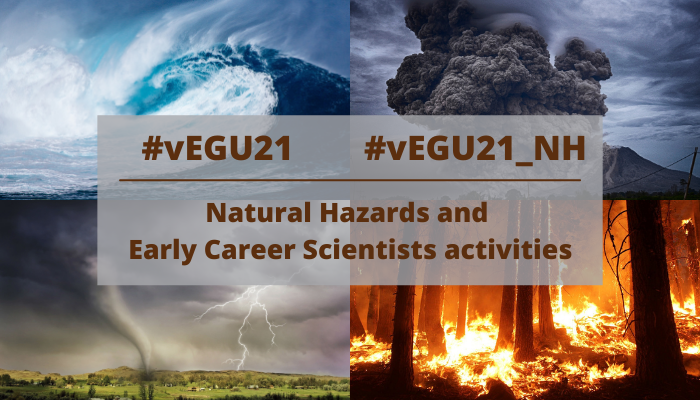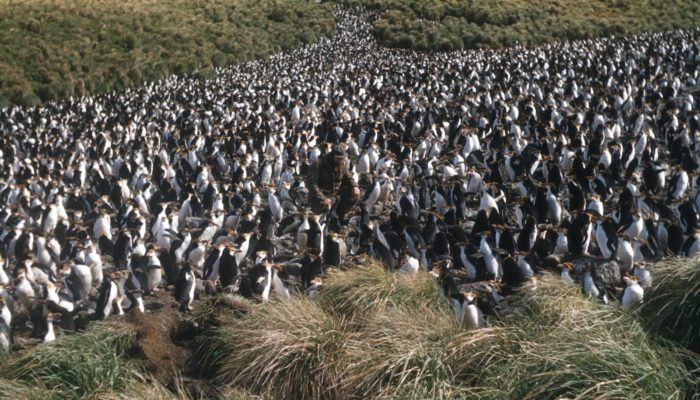First the worst, second the best, third the one with a hairy chest! Gemma used to chant that in the playground, but now she wonders if it also applies to PhDs. I am not happy with my PhD. Should I do a second? Dear Gemma, That sounds like a great idea! Everyone who’s finished a PhD knows they could do it again in half the time, unless you had a supervisor with supernatural managerial abiliti ...[Read More]
If you didn't find what you was looking for try searching again.
Tectonics and Structural Geology
Run up to vEGU21: Advice for TS presenters and conveners
Abstracts, Displays and vPICOs: Upload, present and comment At vEGU21, three elements compound all presentations, known as vPICOs: the “Abstract”, the “Display material” and the “Live presentation slide”. Abstracts are the same as for in-person EGU General Assemblies. Each abstract submitted has received a DOI (Digital Object Identifier) to ensure the research i ...[Read More]
Tectonics and Structural Geology
Run up to vEGU21: Advice for TS attendees
The program and general advice TS attendees can use their Personal Program to organise all sessions of interest, as in any EGU General Assembly. Entire sessions or individual abstracts can be added to keep track of your most important topics by clicking the yellow star next to the abstract or session. Aside from the regular sessions, there is also the usual range of Union Symposia and Great Debate ...[Read More]
Nonlinear Processes in Geosciences
#vEGU21 Networking events of the Nonlinear Processes in Geosciences (NP) Division
The current COVID-19 situation has profoundly changed our daily lives and has also affected our way to perform and share research. In today’s world a lot of efforts have been made to minimize the impact of working from home and exchange thoughts with colleagues. As for last year the usual annual General Assembly of the European Geosciences Union (EGU) has been moved online. Thus, it will be virtua ...[Read More]
GeoLog
How to vEGU: top 10 tips for participants to get the most out of vEGU21!
Whether you spend a lot of time interacting in digital spaces, or this is your first time, #vEGU21 is bound to be an interesting experiment for us all. Many Networking and Session conveners will be learning right along with you and our conference organiser Copernicus has been busy preparing as much as possible to make sure that all our participants have the best experience over the next two weeks. ...[Read More]
Natural Hazards
#vEGU21: Gather Online – Get ready for the Natural Hazards and ECS activities
Have you heard the news? The next EGU’s General Assembly is starting on Monday, and this year it will last for two weeks!!! And yes, as you may have guessed, with the Covid-19 pandemic continuing to have a considerable impact on face-to-face scientific meetings throughout the world, EGU 2021 will be entirely virtual. And that’s not all. We will have the ability to interact with each ot ...[Read More]
Cryospheric Sciences
Cryo tips to make the most of vEGU21
Similar to last year, this year’s annual general assembly is fully virtual. But unlike last year, the in-person experience is back! There are short courses, networking events and a website which looks just like the real Vienna Conference Centre. So go and buy yourself a Viennese Sachertorte, brew a batch of coffee and take 5 minutes to look at our top recommendations for vEGU21. vEGU21 – wha ...[Read More]
Tectonics and Structural Geology
The ECS TS team, or what happens between GAs
As the EGU Tectonics and Structural Geology (TS) Early Career Scientist (ECS) Representative, and with the outlook of a second virtual general assembly, I take the opportunity to: (i) provide in two following blogposts, some general guidelines and advice to EGU TS attendees, presenters, and conveners, as recently informed by several blog posts in the EGU-Wide blogs, and (ii) highlight some of the ...[Read More]
GeoLog
How to vEGU – Networking (part 4): Top 10 Networking events!
Throughout the two weeks of #vEGU21 the assembly will be host to a diverse number of networking events. In this blog we’ve highlighted some of the key events of interest to attendees. Events are ordered in date-order from the start of the conference. You can keep up-to-date on Networking events by in the EGU Programme. This year there are two options: the EGU sponsored Networking events and the Po ...[Read More]
Hydrological Sciences
Getting hydrologically ready for #vEGU21 Gather Online
Next week the vEGU General Assembly will start gathering its members online for its annual general assembly. Who would have imagined ten or five years ago that there would be two consecutive editions of EGU online? SGO Sharing Geoscience Online EGU2020 and now vEGU21 Last year, we only had six weeks to move from a traditional GA in Vienna in April to an online alternative. We learned a lot and ref ...[Read More]








